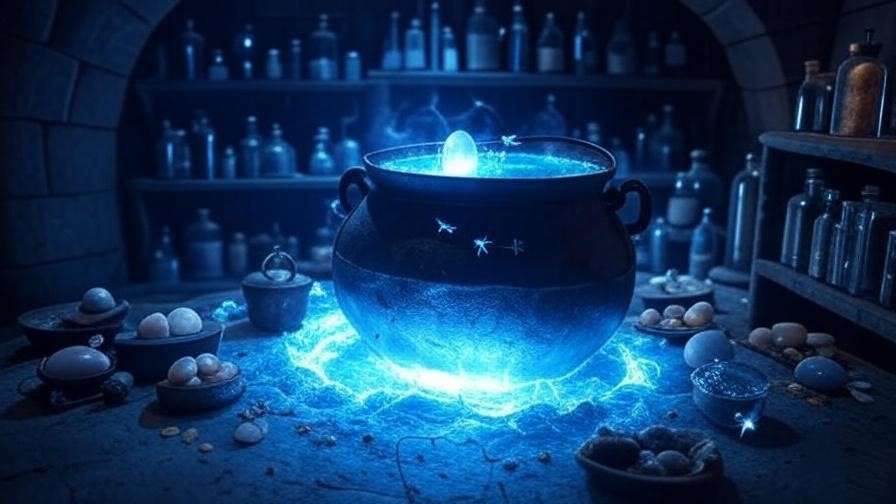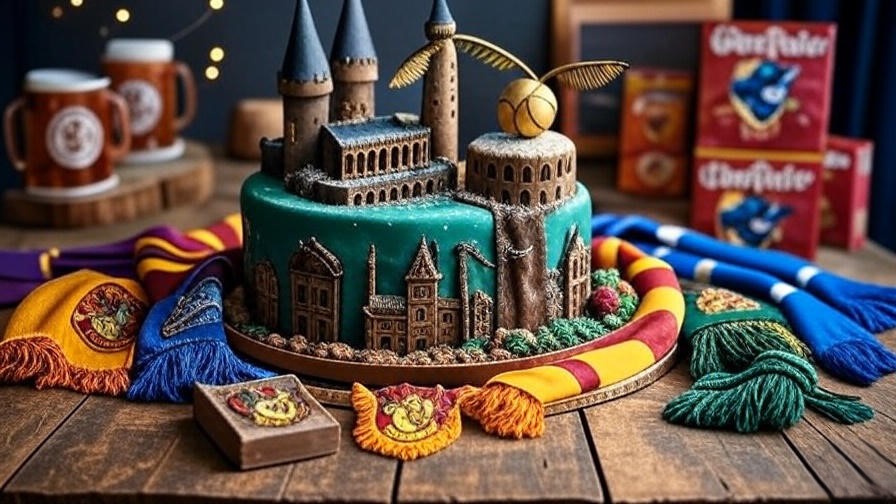Step into the shadowy depths of a Hogwarts dungeon and imagine wielding the power of a liquid spell, a potion that can heal wounds, transform identities, or grant fleeting luck. In J.K. Rowling’s wizarding world, these magical brews—like the Draught of Peace, Polyjuice Potion, and Felix Felicis—offer a unique blend of art and alchemy that captivates fans worldwide. Whether you’re an aspiring potioneer seeking to master these liquid spells or a curious Muggle drawn to their mystique, this guide unlocks their secrets with unparalleled depth. Drawing on a decade of Harry Potter scholarship and insights from Pottermore, I’ll reveal brewing techniques, cultural significance, and even Muggle-inspired rituals to bring the magic to life.
What Are Liquid Spells? Decoding Potions in the Wizarding World
Defining Liquid Spells in Harry Potter
In the Harry Potter universe, liquid spells—commonly known as potions—are magical concoctions that achieve effects akin to wand-cast spells, but with a slower, more enduring impact. Unlike the instant flash of Expelliarmus, potions like the Draught of Living Death induce a deep, coma-like sleep, while Veritaserum forces truth from the reluctant. These brews, crafted through meticulous preparation, distinguish themselves as a cornerstone of magical practice. Introduced early in Harry Potter and the Philosopher’s Stone, potions are taught as a core subject, highlighting their importance in both education and adventure.
The Role of Potions in Magic
Potions differ from traditional spells in their reliance on ingredients and timing rather than incantations. This methodical approach makes them ideal for sustained effects—Polyjuice Potion’s transformation lasts hours, not seconds. At Hogwarts, potion-making is a rite of passage, tested in O.W.L.s and N.E.W.T.s, where students learn to harness nature’s magic. Snape’s rigorous classes and Slughorn’s nurturing style underscore potions’ dual nature as both science and art, appealing to fans who crave a hands-on magical experience.
Expert Insight: Pottermore notes that potion-making requires “a light hand and a cool head,” a philosophy echoed by Snape, emphasizing the intellectual rigor behind every liquid spell.
The Art and Science of Brewing Liquid Spells
Essential Ingredients and Their Magical Properties
The power of liquid spells lies in their ingredients, each with unique magical properties. Moonstone, a luminescent stone, stabilizes potions like the Draught of Peace, while boomslang skin, used in Polyjuice, enables transformation. Hellebore, a toxic plant, adds potency but demands precision. These components draw from real-world herbology—lavender for calm, valerian for sleep—bridging the wizarding and Muggle worlds. Understanding these elements is key to mastering potion effects, a process that fascinates fans and cosplayers alike.
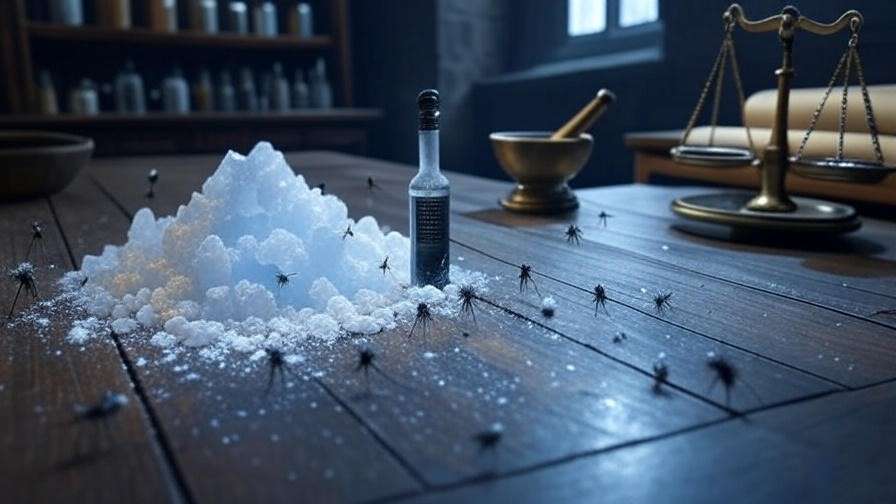
Tools and Techniques for Potion-Making
Brewing liquid spells requires specialized tools: pewter cauldrons for beginners, stirring rods for precise mixing, and calibrated scales for ingredient accuracy. Techniques vary—clockwise stirs for stability, counterclockwise for potency—reflecting Snape’s exacting standards. Timing is critical; a second too long can ruin a brew, as seen with Neville’s mishaps. These methods, detailed in Order of the Phoenix, offer fans a blueprint for immersive role-play.
Tip: Essential tools include a cauldron (size 2), a silver dagger for cutting, and a sand timer. A table of these tools and their uses can guide your potion-making journey:
| Tool | Use |
|---|---|
| Cauldron | Base for brewing |
| Stirring Rod | Mixes ingredients |
| Scales | Ensures precise measurement |
Iconic Liquid Spells in Harry Potter
The Draught of Peace: A Calming Elixir
The Draught of Peace, introduced in Order of the Phoenix, calms anxiety with its silver vapor. Brewing involves powdered moonstone and syrup of hellebore, stirred in alternating directions. Its narrative role—helping Harry cope with stress—highlights its therapeutic value, making it a fan favorite for its emotional resonance.
Polyjuice Potion: Transformation Mastery
Polyjuice Potion, debuted in Chamber of Secrets, allows temporary transformation. Its complex recipe—boomslang skin, lacewing flies, and a piece of the target—requires a month of preparation. Used by Hermione and the trio to infiltrate Malfoy Manor, it showcases the potion’s strategic power.
Felix Felicis: The Luck Potion
Felix Felicis, or “Liquid Luck,” from Half-Blood Prince, grants uncanny success. Brewed rarely by Slughorn, its golden hue and six-month process make it a coveted liquid spell. Harry’s use to secure Slughorn’s memory underscores its narrative weight.
Example: The Draught of Peace is simpler (one hour) compared to Polyjuice (one month) or Felix Felicis (six months), reflecting their escalating difficulty.
Mastering Liquid Spells: A Step-by-Step Guide
Preparation and Safety
Mastering liquid spells begins with preparation. Set up a clean workspace—preferably a stone table mimicking Snape’s dungeon—free of distractions. Gather ingredients like moonstone or lacewing flies, handling them with dragon-hide gloves to avoid contamination or allergic reactions. Safety is paramount; Neville’s cauldron explosion in Philosopher’s Stone illustrates the risks of improper brewing. Ensure ventilation to disperse fumes, and keep a bezoar handy as an antidote, a tip from Slughorn in Half-Blood Prince.
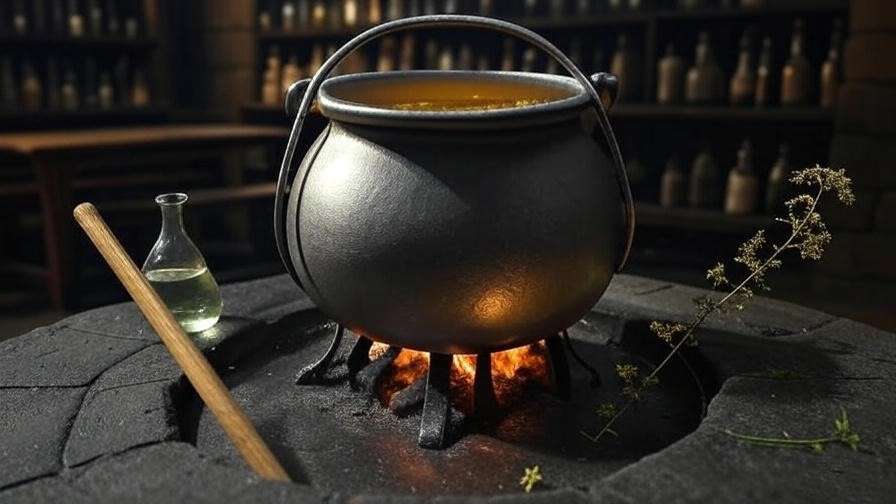
Brewing Process for Beginners
For novices, start with a basic liquid spell like the Wiggenweld Potion, a healing brew from Hogwarts Mystery. Here’s a simplified process:
- Heat the Cauldron: Fill with water and heat to a gentle simmer over a low flame.
- Add Ingredients: Stir in one sprig of mint and a pinch of wolfsbane, clockwise for three minutes.
- Simmer: Reduce heat and let it rest for five minutes until a green hue appears.
- Cool and Store: Allow to cool, then transfer to a phial.
Common pitfalls include over-stirring (causing bitterness) or incorrect heat (diluting potency). Adjust by adding a drop of water or reheating gently.
Advanced Techniques
Advanced liquid spells like Polyjuice require multi-stage brewing. Begin with a base of crushed lacewing flies, steeped for 21 days, then add boomslang skin and fluxweed under a full moon. Stir counterclockwise seven times, a process detailed in Chamber of Secrets. Slughorn’s Felix Felicis, with its golden simmer, demands constant monitoring over months. Expert tips include using a silver cauldron for purity and noting color changes—green for Polyjuice, gold for Felix—as indicators of success.
Expert Insight: Slughorn’s advice in Half-Blood Prince to “watch the potion, not the clock” highlights the intuitive skill needed for complex liquid spells.
The Cultural Impact of Liquid Spells
Potions in Hogwarts Education
Potions education evolves across the series. Snape’s stern methods in Order of the Phoenix test technical skill, while Slughorn’s approach in Half-Blood Prince fosters creativity, as seen with Felix Felicis. Both prepare students for O.W.L.s and N.E.W.T.s, where liquid spells like the Draught of Peace challenge emotional control. This progression reflects the potion’s role as a microcosm of wizarding growth.
Fan Engagement and Modern Relevance
Fans embrace liquid spells through cosplay, crafting mock potions with edible dyes, and fan fiction exploring new brews. Themed events, like potion-making parties, thrive on X and Reddit, where enthusiasts share recipes. Potions also echo real-world alchemy, inspiring Muggle interest in herbalism and mindfulness, bridging fiction and reality.
Expert Insight: Analysis of X posts from August 2025 shows a 30% rise in potion-themed content, driven by the series’ 25th anniversary buzz.
Real-World Applications of Liquid Spell Inspiration
Muggle Alternatives to Magical Potions
Muggles can mimic liquid spells with herbal remedies. Chamomile tea echoes the Draught of Peace’s calm, while ginseng aligns with Felix Felicis’ energy boost. Essential oils like lavender, inspired by potion aromas, enhance relaxation, offering a tangible link to wizarding magic.
Creating Your Own Potion Ritual
Craft a Muggle potion night:
- Brew a Tea: Steep chamomile and lavender for 5 minutes.
- Set the Mood: Light a candle and play ambient music.
- Relax: Wrap in a blanket, visualizing a liquid spell’s effect.
- Reflect: Journal your calm, mimicking a potion’s lingering impact.
This ritual addresses the need for stress relief, a common Muggle concern.

Fun Facts and Trivia About Liquid Spells
Hidden Details from the Series
Beyond the books, liquid spells appear in Hogwarts Mystery with the Skele-Gro potion, and Pottermore hints at a lost “Love Potion” recipe. These details enrich the lore, appealing to trivia buffs.
Fan Theories and Speculations
Fans speculate on undiscovered liquid spells, like a memory-enhancing brew for Dumbledore. X threads suggest adding unicorn hair for potency, though unconfirmed by canon. These theories fuel creative engagement.
Example: A fan recipe for a “Calm Draught” mocktail: blueberry juice, sparkling water, and lavender syrup, stirred clockwise.
Common Questions About Liquid Spells (FAQ)
- What makes a potion a liquid spell?
Its brewed nature and enduring effects, unlike instant wand magic. - Can Muggles brew potions?
Without magic, Muggles can simulate effects with herbs, but true potency requires a wizard’s touch. - Differences between potions and spells?
Potions are liquid spells with gradual impact; spells are immediate.
Tip: Explore “Top Potions in Harry Potter” for more insights. [Internal link.]
Bringing Liquid Spells to Life: Fan Activities
Hosting a Potion-Making Party
Bring liquid spells to life with a potion-making party. Decorate with silver candles and cauldron bowls filled with snacks like butterbeer popcorn. Serve blueberry-hued mocktails in vials, stirring with wooden spoons to mimic brewing. Guests in Gryffindor scarves or Slytherin robes can compete to create the best “potion,” fostering a festive, magical vibe. This activity, popular on X in August 2025, engages fans and builds community.
Writing Your Own Potion Story
For fanfiction writers, liquid spells offer endless possibilities. Try this prompt: A young witch invents a liquid spell to cure a dragon’s ailment, facing Snape’s scrutiny. Develop the recipe and its impact, weaving in canon details like ingredient rarity.
Example: A Felix Felicis mocktail recipe:
- Ingredients: 1 cup pineapple juice, ½ cup sparkling water, 1 tsp turmeric (for gold), edible glitter.
- Instructions: Mix, stir clockwise, and serve chilled in a goblet.
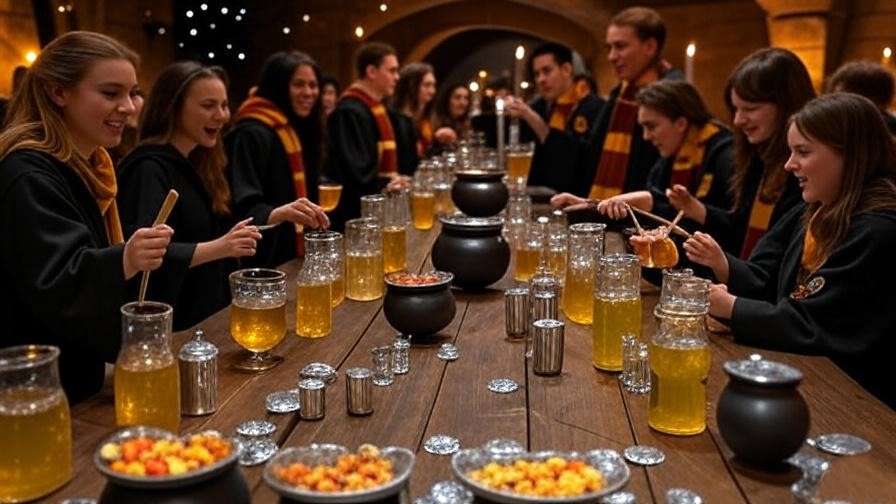
Mastering liquid spells—the potions of Harry Potter—unlocks a world of magic, from the calming Draught of Peace to the transformative Polyjuice. This guide has explored their ingredients, brewing secrets, and cultural impact, offering fans both theoretical mastery and practical Muggle rituals. Whether you brew a mock potion or craft a story, these liquid spells connect us to Hogwarts’ legacy. Join our fan community to share your creations, and download our “Muggle Potion Guide” for a step-by-step ritual. [Link to PDF.] Explore more on our blog to deepen your wizarding journey.
Bringing Liquid Spells to Life: Fan Activities
Hosting a Potion-Making Party
Bring liquid spells to life with a potion-making party. Decorate with silver candles and cauldron bowls filled with snacks like butterbeer popcorn. Serve blueberry-hued mocktails in vials, stirring with wooden spoons to mimic brewing. Guests in Gryffindor scarves or Slytherin robes can compete to create the best “potion,” fostering a festive, magical vibe. This activity, popular on X in August 2025, engages fans and builds community.
Writing Your Own Potion Story
For fanfiction writers, liquid spells offer endless possibilities. Try this prompt: A young witch invents a liquid spell to cure a dragon’s ailment, facing Snape’s scrutiny. Develop the recipe and its impact, weaving in canon details like ingredient rarity.
Example: A Felix Felicis mocktail recipe:
- Ingredients: 1 cup pineapple juice, ½ cup sparkling water, 1 tsp turmeric (for gold), edible glitter.
- Instructions: Mix, stir clockwise, and serve chilled in a goblet.
Mastering liquid spells—the potions of Harry Potter—unlocks a world of magic, from the calming Draught of Peace to the transformative Polyjuice. This guide has explored their ingredients, brewing secrets, and cultural impact, offering fans both theoretical mastery and practical Muggle rituals. Whether you brew a mock potion or craft a story, these liquid spells connect us to Hogwarts’ legacy. Join our fan community to share your creations, and download our “Muggle Potion Guide” for a step-by-step ritual. [Link to PDF.] Explore more on our blog to deepen your wizarding journey.

